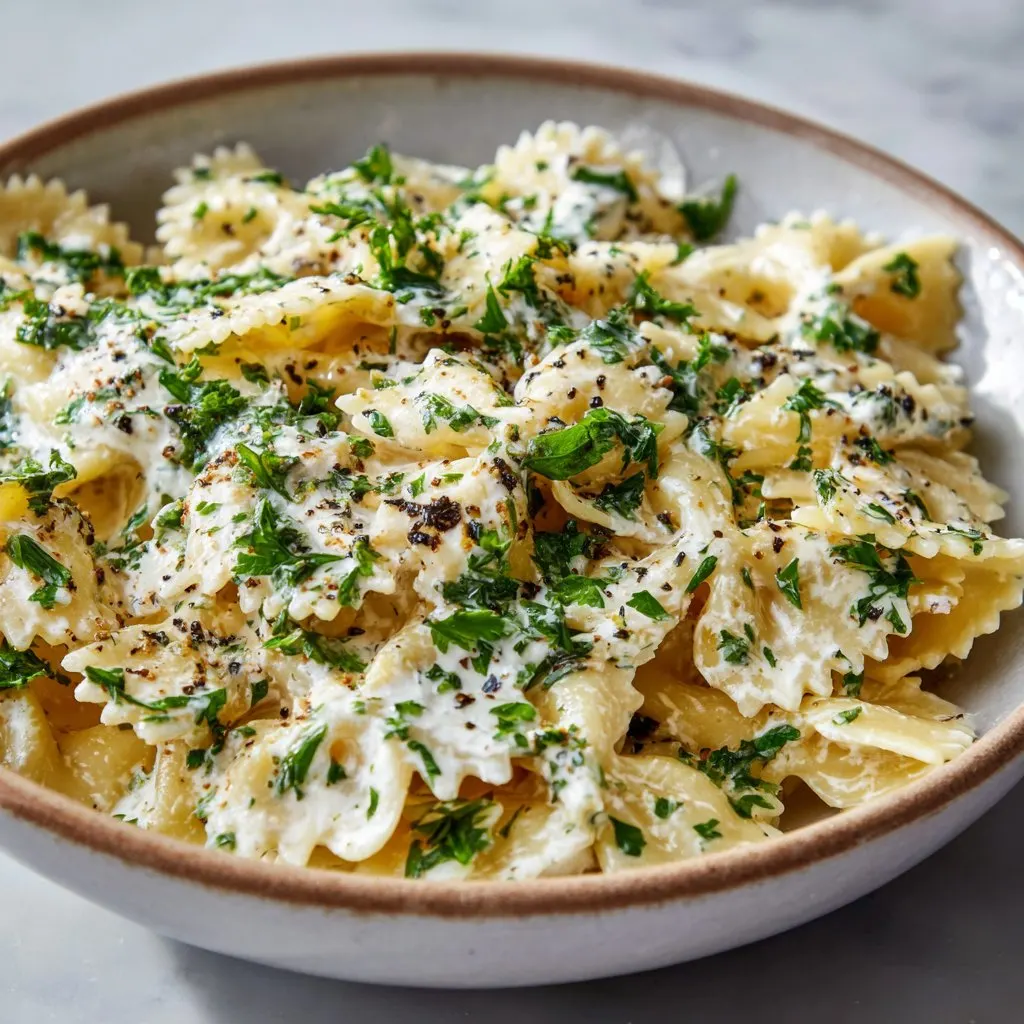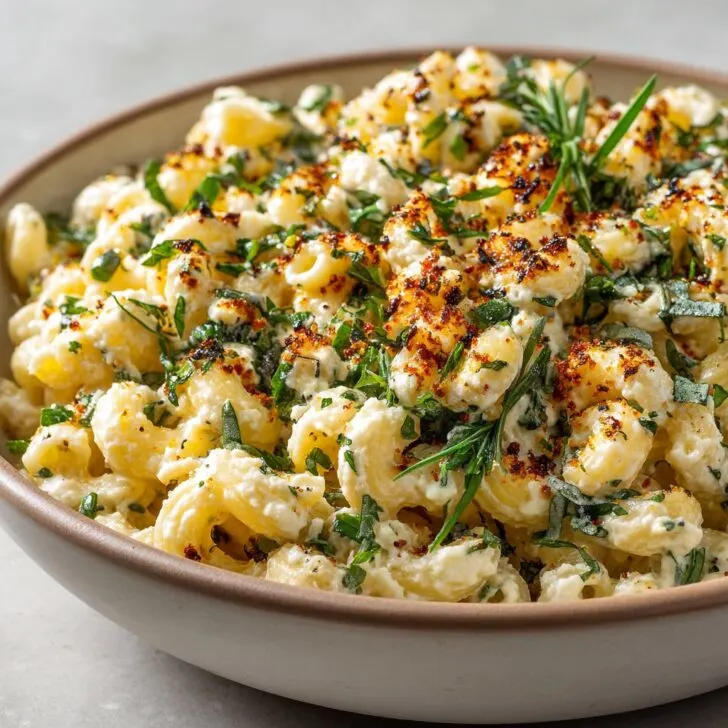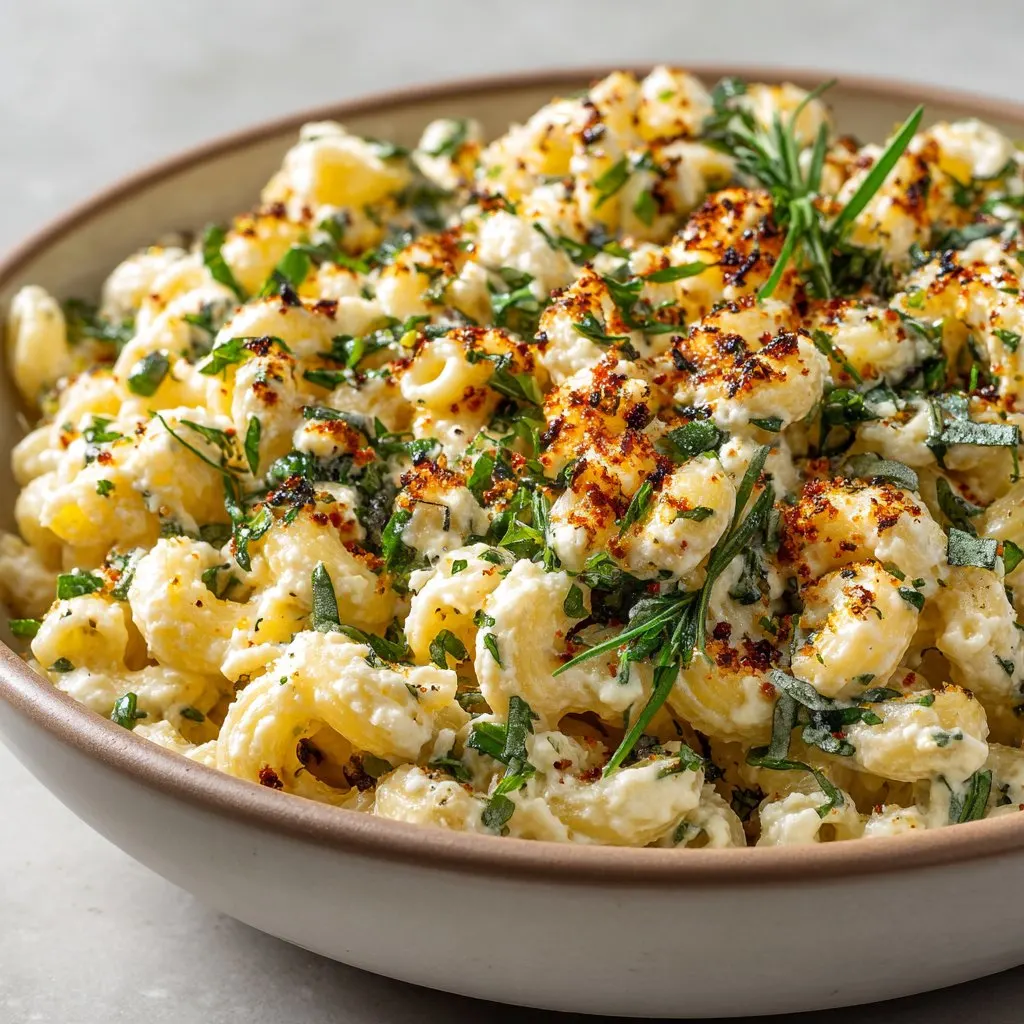If You Need Comfort Food Fast, This Creamy Ricotta Pasta Is It
So, picture this: it's one of those days where all my plans fell through—burnt toast for breakfast, forgot my wallet at the store (don't even ask), classic Monday-style chaos. And then I remember this creamy ricotta pasta with fresh herbs and garlic. It’s my secret weapon, the dinner equivalent of a warm hug, especially when I’m too frazzled to do anything fancy.
I probably make this way more often than I should admit, but honestly? It's just too good. Oh, and if you’ve ever tried stirring ricotta into hot pasta and worried it’d go weird or grainy, trust me, I’ve been there. That’s why I had to write this down for you. Plus, my dog once tried to steal a noodle—he’s got good taste, apparently.
Why This Pasta Is Always On Repeat at My Place
I make this when I’m craving something creamy but don’t want to deal with a heavy cream sauce. My family goes crazy for this because the garlic is just the right kind of mellowed (and let’s be honest, it’s quick enough for a Tuesday night). Plus, when my basil is threatening to take over the balcony, this is how I use it up.
Honestly, the only annoying bit was figuring out how not to end up with a weirdly watery sauce—spoiler: I now just reserve a mug of pasta water and use it like magic. If you’ve got picky eaters, the herbs are totally adjustable. I once snuck in some spinach and nobody noticed. Don’t tell them.
What You’ll Need (Optional Chaos Included)
- 350g dry pasta (penne, rigatoni, or honestly whatever’s lurking in your cupboard—spaghetti works, too)
- 1 cup ricotta cheese (full-fat is my fave, but my grandmother swore by the supermarket low-fat stuff—she was very persuasive)
- 3 cloves garlic, minced (or more if you’re a garlic fiend; I’ve done up to five, no regrets)
- ¼ cup extra-virgin olive oil (sometimes I use butter when I’m feeling fancy)
- Big handful of fresh herbs, chopped (basil is classic, but I’ve thrown in parsley, chives, or dill when it’s what I had)
- ½ cup grated parmesan (totally optional, but very delicious)
- Salt and black pepper, to taste (I am not shy with the pepper)
- Zest from 1 lemon (this is my own twist—leave it out if you want, but it’s lovely)
- Pasta cooking water (just scoop some out before draining—trust me!)
Let’s Make It: Directions From a Distracted Home Cook
- Start by bringing a big ol’ pot of salted water to a rolling boil. Like, really salty. It should taste like the sea (or so I’m told; I don’t actually taste my pasta water, but you do you).
- Chuck in the pasta and cook according to the package, but check a minute early. I like mine a bit al dente. Before you drain it, scoop out a mugful of that glorious, starchy water; you’ll need it for the sauce (I’ve forgotten this step so many times—one day I’ll learn).
- While the pasta’s doing its thing, grab a big skillet or pan and gently warm the olive oil over medium heat. Toss in the minced garlic. Stir it around for about a minute until fragrant but not brown—seriously, don’t wander away, it goes from golden to burnt faster than you’d think (ask me how I know).
- Turn the heat down and add the drained pasta to the skillet (if your pan isn’t big enough, just dump everything back in the pasta pot; it’s fine). Dollop the ricotta over the top. Throw in your chopped herbs, lemon zest, and parmesan if using. Add about half your reserved pasta water and stir everything like you mean it. Don’t worry if it looks a bit weird at this stage—it always does! I usually sneak a taste here (for quality control, obviously).
- If it’s too thick or sticky, splash in more pasta water until it’s creamy but not soupy. Season with salt and pepper. Taste. Adjust. Go wild.
- Serve hot, with more herbs and a lashing of extra parmesan if you’ve got it. I sometimes squeeze a bit more lemon over the top at the table, but that’s just me.
Stuff I’ve Learned (Usually the Hard Way)
- If you use low-fat ricotta, the sauce might separate a bit. It still tastes good, but it’s not as creamy. I mean, you could try blending it, but who has the time?
- Don’t skip the pasta water. I once forgot and tried to use plain water—big mistake. The sauce just wasn’t the same.
- Leaving the garlic in too long makes it bitter. I know everyone says this, but seriously, it ruins the whole vibe.
If You Want to Mix It Up (And What Didn’t Work)
- Sometimes I toss in peas or baby spinach in the last minute of cooking the pasta. Peas are especially nice with the ricotta.
- For a meaty twist, crispy pancetta or bacon on top is amazing—just cook it first in the skillet, then use the drippings for your garlic. I tried chicken once, but honestly it felt too heavy.
- Once I tried swapping half the ricotta for cottage cheese to "lighten it up." It was... not great. Wouldn’t repeat that experiment.
- If you like heat, a pinch of red pepper flakes in the garlic oil is lovely.
You Actually Don’t Need Fancy Equipment
I use a giant skillet, but when mine was in the dishwasher (again), I just mixed everything right in the pasta pot. Worked fine. If you don’t have a zester, use the smallest holes on a box grater or honestly just skip the lemon, it’s not a dealbreaker. Serious Eats has a great primer on basic pasta tools if you’re curious, but really, use what you’ve got.

How I Store (or Don’t Store) Leftovers
In theory, you can keep leftovers in the fridge for 2-3 days in an airtight container. But honestly, in my house it never lasts more than a day—someone always sneaks it for lunch. If it does get a bit dry, just splash a tablespoon of water or milk before reheating. I think it tastes better the next day, but maybe that's just me.
How We Usually Serve It (and a Tiny Family Tradition)
We always have this with a heap of extra herbs on top and a side of crusty bread (to mop up the sauce—obviously). Sometimes I’ll add a quick green salad, but if I’m honest, most days it’s just pasta and bread. Oh, and a cold glass of white wine if it’s been that kind of week.
Stuff I’ve Messed Up: Pro Tips
- I once tried rushing the garlic and cranked the heat up—regretted it instantly. Bitter garlic is no one’s idea of a good time.
- Adding all the pasta water at once made it soupy; it’s better to add in stages until you get the texture you want. (Actually, I find it works better if you’re a bit stingy at first.)
- Don’t try to make this ahead and leave it sitting on the stove—ricotta doesn’t like being reheated too much. It’s best fresh.
Real Questions I’ve Actually Been Asked
- Can I use dried herbs?
- Sure you can! Honestly, just use less—dried herbs are stronger. But if you’ve got fresh, use ‘em. Makes a big diff.
- Is there a vegan version?
- Yep, there’s vegan ricotta out there now (I tried this one from Minimalist Baker and it was pretty good), and just skip the parm or use a vegan substitute.
- What pasta shapes work best?
- Honestly, whatever’s in the pantry. I like rigatoni or penne because they hold the creamy sauce, but spaghetti or fusilli totally work. Oh, and I once used bowties (farfalle) and it was adorable, if a bit unwieldy to eat.
- Can I freeze leftovers?
- I wouldn’t. The sauce goes a bit grainy when thawed. Fridge is your friend here.
- Why does my sauce look curdled?
- Usually it’s the heat—if you add ricotta to a screaming hot pan, it can split. Lower the heat, add a splash of pasta water, and stir like mad. Nine times out of ten it smooths out. Or just pretend it’s rustic. (That’s my go-to fix.)
Oh—quick side note, if you ever find yourself with extra ricotta, try mixing it with honey and spreading it on toast. Not at all related to this pasta, but possibly life-changing.
If you want more pasta inspiration, I love this collection from Bon Appétit. Happy cooking, and don’t forget to sneak a taste along the way—you earned it.
Ingredients
- 12 oz (340 g) pasta (such as spaghetti or fettuccine)
- 1 cup ricotta cheese
- 2 tablespoons extra-virgin olive oil
- 3 cloves garlic, minced
- ¼ cup fresh basil, chopped
- 2 tablespoons fresh parsley, chopped
- ¼ cup grated Parmesan cheese
- Salt and freshly ground black pepper, to taste
- Zest of 1 lemon (optional)
Instructions
-
1Bring a large pot of salted water to a boil. Cook the pasta according to package instructions until al dente. Reserve ½ cup of pasta water, then drain the pasta.
-
2While the pasta cooks, heat the olive oil in a large skillet over medium heat. Add the minced garlic and sauté for 1-2 minutes until fragrant, being careful not to brown it.
-
3Reduce the heat to low. Add the cooked pasta to the skillet with garlic. Stir in the ricotta cheese and a splash of reserved pasta water, tossing until the pasta is evenly coated and creamy.
-
4Add the chopped basil, parsley, and lemon zest (if using). Sprinkle in the grated Parmesan cheese. Toss everything together, adding more pasta water as needed to reach desired creaminess.
-
5Season with salt and freshly ground black pepper to taste. Serve immediately, garnished with extra herbs and Parmesan if desired.
Approximate Information for One Serving
Nutrition Disclaimers
Number of total servings shown is approximate. Actual number of servings will depend on your preferred portion sizes.
Nutritional values shown are general guidelines and reflect information for 1 serving using the ingredients listed, not including any optional ingredients. Actual macros may vary slightly depending on specific brands and types of ingredients used.
To determine the weight of one serving, prepare the recipe as instructed. Weigh the finished recipe, then divide the weight of the finished recipe (not including the weight of the container the food is in) by the desired number of servings. Result will be the weight of one serving.
Did you make this recipe?
Please consider Pinning it!!


